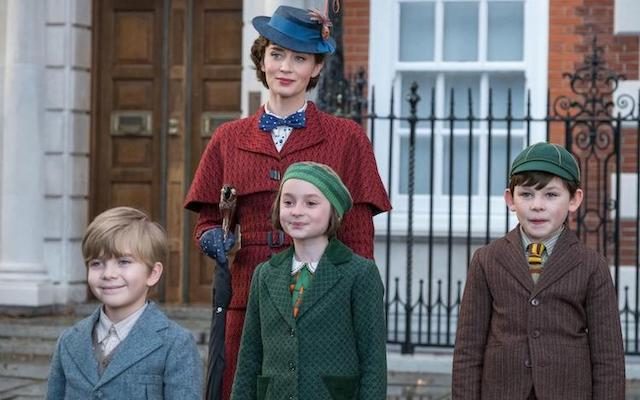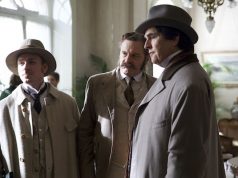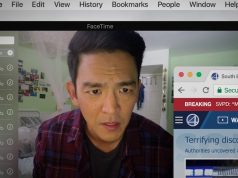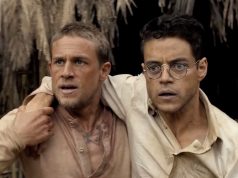
“Mary Poppins” is one of my all-time favorite movies, so while I’m not usually given to alarm over proposed sequels and remakes — it’s not replacing the original; get a life, nerds — I assumed that “Mary Poppins Returns” was a bad idea and braced myself for a disappointing retread.
It turns out that it is a retread, and it’s not as bright and colorful (literally or figuratively) as the 1964 classic, but it’s only disappointing if you were expecting “Mary Poppins.” If you want to watch “Mary Poppins,” stay home and watch “Mary Poppins.” Like the remake of “The Grinch” earlier this season, “Mary Poppins Returns” doesn’t add much to the legacy, but it doesn’t detract from it either. If there had to be a sequel (which, again, there did not), this one, directed by Rob Marshall (“Chicago,” “Into the Woods”) is about as good as you could reasonably expect it to be.
It’s set some 20 years later, during the “Great Slump,” as the Brits evidently called the Depression. Grown-up Michael Banks (Ben Whishaw), recently widowed, lives with his three young children in the familiar house on Cherry Tree Lane that he and Jane (Emily Mortimer) grew up in. They are about to lose the house to a villainous banker (Colin Firth), though, unless they can find the stock certificate proving that Grandpa Banks left them sufficient money to cover it.
Floating in from the heavens is Mary Poppins (Emily Blunt), looking exactly as she did all those years ago (they don’t notice that she is played by a different actress), still the same practically perfect nanny and shade-thrower. “We are still not a codfish,” she says to a gaping Michael before sliding up the bannister to reclaim her old room. She’ll help Michael and the children until it’s time to move on; in the meantime, they’ll have adventures and sing songs. You know the drill!
David Magee’s screenplay (based on a story credited to him, Marshall, and regular Marshall collaborator John DeLuca) tries to replicate the original film’s magic by replicating its components, and largely succeeds. Instead of Bert the chimneysweep (who’s said to be off traveling the world), it’s Jack the lamplighter (Lin-Manuel Miranda), who trained with Bert as a boy and knows Ms. Poppins already and is basically Bert but with a different name. Instead of a chalk drawing, Mary, Jack, and the kids jump into the scene painted on a ceramic bowl. Instead of visiting Uncle Albert’s house, where laughing makes you float to the ceiling, they visit Cousin Topsy (Meryl Streep), whose house turns itself upside-down every Wednesday.
These sequences are plenty of fun, buoyed by catchy new songs by “Hairspray” duo Marc Shaiman and Scott Wittman that blend well with the ones we already know (snippets of which are heard in the score). Miranda, in keeping with franchise tradition, does an atrocious cockney accent, but he also does a “Hamilton”-esque patter verse in one of the production numbers that’s very impressive and doesn’t feel as anachronistic as you might think (Bert did some patter in “It’s a Jolly Holiday,” too, you know). The staging, the choreography, and the multitude of special effects are suitably magical, yet old-fashioned enough — the animation looks hand-drawn, not computer-generated — that you might forget it’s been 54 years since Disney’s last visit to Cherry Tree Lane.
It’s too bad the story has nothing for Jane to do, and too bad that Michael’s three children — John (Nathanael Saleh), Annabel (Pixie Davies), and li’l scamp Georgie (Joel Dawson) — are essentially interchangeable. But the energy seldom flags because there’s always something imaginative just around the corner, and because of Emily Blunt’s supremely confident and thorough undertaking of a role that could have been a disaster for her. She perfectly captures Mary Poppins’ imperious but loving demeanor and her matter-of-fact treatment of nonsense, recreating the character without simply impersonating Julie Andrews. You get the sense that everyone involved had genuine affection for the old film and wanted to make a worthy followup. I don’t know if that’s the case (maybe it was just a job for some of them), but the sequel has a warmth and wholesomeness that feels very familiar.
B (2 hrs., 10 min.; )





